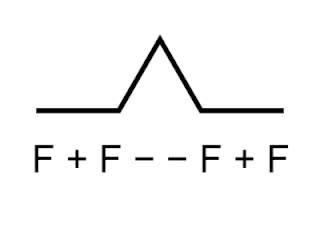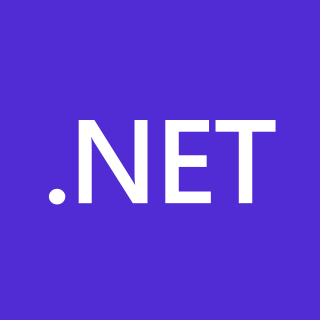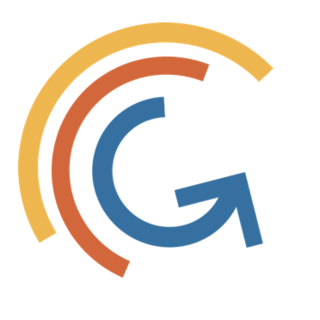Related Research Articles

Logo is an educational programming language, designed in 1967 by Wally Feurzeig, Seymour Papert, and Cynthia Solomon. Logo is not an acronym: the name was coined by Feurzeig while he was at Bolt, Beranek and Newman, and derives from the Greek logos, meaning word or thought.

Eclipse is an integrated development environment (IDE) used in computer programming. It contains a base workspace and an extensible plug-in system for customizing the environment. It is the second-most-popular IDE for Java development, and, until 2016, was the most popular. Eclipse is written mostly in Java and its primary use is for developing Java applications, but it may also be used to develop applications in other programming languages via plug-ins, including Ada, ABAP, C, C++, C#, Clojure, COBOL, D, Erlang, Fortran, Groovy, Haskell, JavaScript, Julia, Lasso, Lua, NATURAL, Perl, PHP, Prolog, Python, R, Ruby, Rust, Scala, and Scheme. It can also be used to develop documents with LaTeX and packages for the software Mathematica. Development environments include the Eclipse Java development tools (JDT) for Java and Scala, Eclipse CDT for C/C++, and Eclipse PDT for PHP, among others.

NetLogo is a programming language and integrated development environment (IDE) for agent-based modeling.

Fast Light Toolkit (FLTK) is a cross-platform widget library for graphical user interfaces (GUIs), developed by Bill Spitzak and others. Made to accommodate 3D graphics programming, it has an interface to OpenGL, but it is also suitable for general GUI programming.
An agent-based model (ABM) is a computational model for simulating the actions and interactions of autonomous agents in order to understand the behavior of a system and what governs its outcomes. It combines elements of game theory, complex systems, emergence, computational sociology, multi-agent systems, and evolutionary programming. Monte Carlo methods are used to understand the stochasticity of these models. Particularly within ecology, ABMs are also called individual-based models (IBMs). A review of recent literature on individual-based models, agent-based models, and multiagent systems shows that ABMs are used in many scientific domains including biology, ecology and social science. Agent-based modeling is related to, but distinct from, the concept of multi-agent systems or multi-agent simulation in that the goal of ABM is to search for explanatory insight into the collective behavior of agents obeying simple rules, typically in natural systems, rather than in designing agents or solving specific practical or engineering problems.
Swarm is the name of an open-source agent-based modeling simulation package, useful for simulating the interaction of agents and their emergent collective behaviour. Swarm was initially developed at the Santa Fe Institute in the mid-1990s, and since 1999 has been maintained by the non-profit Swarm Development Group. Also known as the Swarm Simulation System, it is available for free and use, covered by the GNU General Public License.
The actor model in computer science is a mathematical model of concurrent computation that treats an actor as the basic building block of concurrent computation. In response to a message it receives, an actor can: make local decisions, create more actors, send more messages, and determine how to respond to the next message received. Actors may modify their own private state, but can only affect each other indirectly through messaging.

Git is a distributed version control system that tracks versions of files. It is often used to control source code by programmers collaboratively developing software.

Open Cascade Technology (OCCT), formerly called CAS.CADE, is an open-source software development platform for 3D CAD, CAM, CAE, etc. that is developed and supported by Open Cascade SAS company.
The Recursive Porous Agent Simulation Toolkit (Repast) is a widely used free and open-source, cross-platform, agent-based modeling and simulation toolkit. Repast has multiple implementations in several languages and built-in adaptive features, such as genetic algorithms and regression.
Agent-based social simulation consists of social simulations that are based on agent-based modeling, and implemented using artificial agent technologies. Agent-based social simulation is a scientific discipline concerned with simulation of social phenomena, using computer-based multiagent models. In these simulations, persons or group of persons are represented by agents. MABSS is a combination of social science, multiagent simulation and computer simulation.

Vaadin is an open-source web application development platform for Java. Vaadin includes a set of Web Components, a Java web framework, and a set of tools that enable developers to implement modern web graphical user interfaces (GUI) using the Java programming language only, TypeScript only, or a combination of both.
Cocos2d is an open-source game development framework for creating 2D games and other graphical software for iOS, Android, Windows, macOS, Linux, HarmonyOS, OpenHarmony and web platforms. It is written in C++ and provides bindings for various programming languages, including C++, C#, Lua, and JavaScript. The framework offers a wide range of features, including physics, particle systems, skeletal animations, tile maps, and others.
Probabilistic programming (PP) is a programming paradigm in which probabilistic models are specified and inference for these models is performed automatically. It represents an attempt to unify probabilistic modeling and traditional general purpose programming in order to make the former easier and more widely applicable. It can be used to create systems that help make decisions in the face of uncertainty.
MASON is a multi-agent simulation environment developed in Java.

The .NET platform is a free and open-source, managed computer software framework for Windows, Linux, and macOS operating systems. The project is mainly developed by Microsoft employees by way of the .NET Foundation and is released under an MIT License.

GAMA is a simulation platform with a complete modelling and simulation integrated development environment (IDE) for building spatially explicit agent-based simulations.

TianoCore EDK II is the reference implementation of UEFI by Intel. EDK is the abbreviation for EFI Development Kit and is developed by the TianoCore community. TianoCore EDK II is the de facto standard generic UEFI services implementation.
References
- ↑ "Altreva - Stock market forecasting software using agent-based market simulation models". www.altreva.com. Retrieved 29 November 2023.
- ↑ (Version 8.7.7) "AnyLogic latest version - 8.7.7". www.anylogic.com. Retrieved 16 January 2020.
- ↑ "Anylogic changes history". Anylogic. Archived from the original on 8 December 2018. Retrieved 9 November 2021.
- ↑ History framsticks.com
- ↑ "Releases · gama-platform/Gama". GitHub .
- ↑ "Releases · eclab/Mason". GitHub .
- ↑ "Releases · NetLogo/NetLogo". GitHub .
- ↑ "Releases · Repast/Repast.simphony". GitHub .
- ↑ "Releases · SoarGroup/Soar". GitHub .
- ↑ "Welcome".
- ↑ "Swarm:Stable release - Swarm".